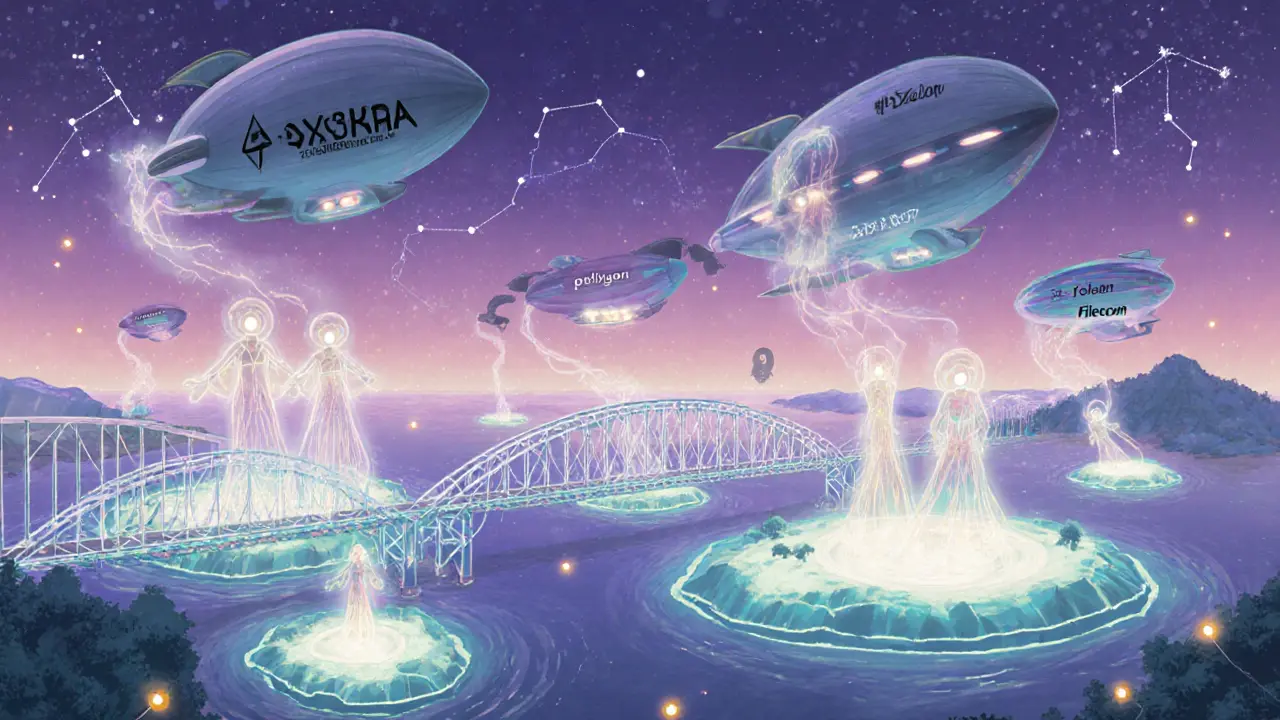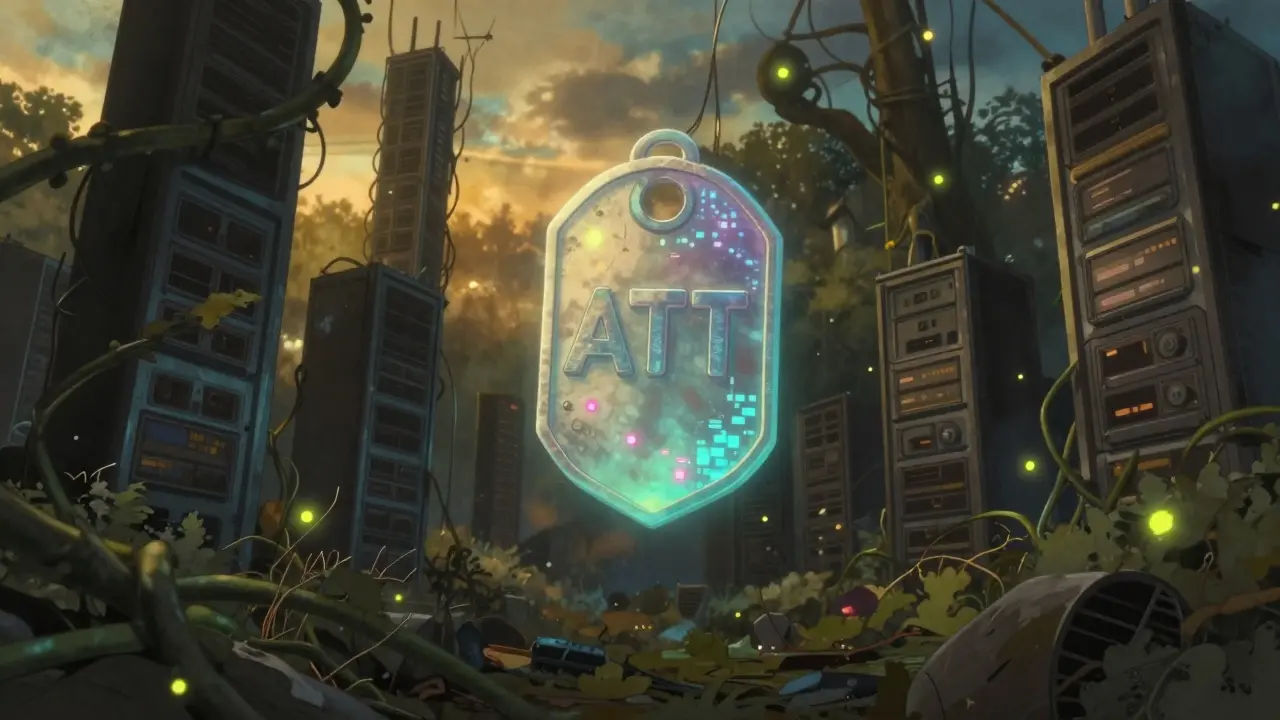Web3 Stack Layer Selector
Project Requirements
Suggested Stack Components
Web3 technology stack is a set of protocols, tools, and services that allow developers to create decentralized applications (dApps) on blockchain networks. In a world where users increasingly demand control over their own data, understanding this stack is the first step toward building trust‑less, transparent solutions.
Key Takeaways
- The stack is divided into five layers, from low‑level network infrastructure (Layer 0) up to user‑facing dApps (Layer 4).
- Core components include blockchain protocols, smart contracts, decentralized storage, identity solutions, and communication layers.
- Development tooling-frameworks, node providers, testing suites-bridges the gap between code and on‑chain deployment.
- Layer 1 handles security and consensus; Layer 2 adds scalability without sacrificing decentralization.
- Choosing the right mix of protocols and services depends on use‑case, performance needs, and community support.
Layered Architecture of the Web3 Stack
Think of the Web3 stack as a skyscraper. Each floor builds on the one below it, adding functionality while keeping the foundation solid.
Layer 0 - Network & Infrastructure
This bottom layer supplies the physical and virtual nodes that keep the blockchain alive. Major players include Ethereum (the most widely used EVM‑compatible network), Polkadot, and Cosmos. Node‑as‑a‑service platforms like QuickNode or Alchemy let developers spin up endpoints without managing hardware.
Layer 1 - Base Protocols
Layer 1 defines the consensus rules, transaction format, and virtual machine. The Ethereum Virtual Machine (EVM) executes smart contracts, while consensus mechanisms-Proof of Work (PoW), Proof of Stake (PoS), Delegated PoS (DPoS), and Practical Byzantine Fault Tolerance (PBFT)-ensure that all nodes agree on the state of the ledger.
Layer 2 - Scaling & Utilities
Layer 2 solutions sit on top of a Layer 1 chain to boost throughput and lower fees. Popular examples are Optimistic Rollups (Optimism, Arbitrum), zk‑Rollups (zkSync, StarkNet), and sidechains like Polygon. These utilities handle transaction batching, fraud proofs, and state commitments, allowing dApps to process thousands of actions per second.
Layer 3 - Services for dApp Development
This layer supplies the building blocks developers need to turn ideas into products:
- Smart contracts - self‑executing code written mainly in Solidity (or Vyper, Rust for Solana).
- Decentralized storage - IPFS and Swarm let you store files, metadata, and even entire front‑ends off‑chain.
- Decentralized identity - solutions like UPort or Civic give users portable, self‑controlled credentials.
- Communication protocols - Whisper and Orbit enable peer‑to‑peer messaging for private dApp interactions.
Layer 4 - End‑User Applications
At the top is the dApp itself, accessed through Web3‑enabled browsers or extensions like MetaMask. These UI layers translate blockchain calls into familiar web experiences: DeFi dashboards, NFT marketplaces, gaming portals, and supply‑chain trackers.
Core Components in Detail
Blockchain - The Immutable Ledger
The blockchain is the backbone of the stack. Each block contains a batch of transactions, cryptographically linked to its predecessor using hash functions. This chain of hashes guarantees tamper‑evidence and enables trustless verification.
Smart Contracts - Code That Controls Value
Smart contracts encode business logic directly on the ledger. Once deployed, they cannot be altered (unless designed with upgrade patterns). Typical use‑cases include token standards (ERC‑20, ERC‑721), automated market makers, and escrow services.
Decentralized Storage - Data Beyond the Chain
Storing large files on‑chain is prohibitively expensive. IPFS (InterPlanetary File System) hashes content into a CID (Content Identifier); the CID lives on the blockchain while the actual bytes are served by a swarm of nodes. Swarm offers a similar content‑addressed model, tightly integrated with Ethereum's ecosystem.
Identity & Access Management
Traditional logins rely on centralized databases. In Web3, a wallet address doubles as an identity. Decentralized ID (DID) frameworks let users prove ownership of an address without revealing personal details, paving the way for privacy‑first applications.
Developer Tooling
From IDE plugins to testing suites, the tooling landscape has matured rapidly:
- Frameworks - Hardhat, Truffle, and Foundry streamline compilation, deployment, and script execution.
- Testing - Mocha and Chai work with Hardhat to run unit tests against a local EVM.
- Node access - Infura, Alchemy, and QuickNode provide reliable RPC endpoints.
- Analytics - The Graph enables indexed queries across on‑chain data.

Layer 1 vs. Layer 2: Quick Comparison
| Aspect | Layer 1 | Layer 2 |
|---|---|---|
| Security Model | Inherited directly from the base blockchain (e.g., PoS/Ethereum) | Relies on proofs or fraud‑proof mechanisms anchored to Layer 1 |
| Transaction Throughput | 15‑30 TPS (Ethereum mainnet) | 1,000‑10,000 TPS depending on rollup type |
| Finality Time | ~12 seconds (post‑merge) | Seconds to minutes (optimistic vs. zk) |
| Typical Use‑Cases | Core token transfers, security‑critical contracts | DeFi swaps, NFT minting, gaming micro‑transactions |
Choosing the Right Stack for Your Project
Not every dApp needs the most cutting‑edge rollup. Follow this decision flow:
- Define security requirements. If users will lock high‑value assets, stay on Layer 1 or use a well‑audited rollup.
- Measure performance needs. For high‑frequency trades or gaming, pick a Layer 2 with sub‑second finality (e.g., zkSync).
- Consider developer familiarity. Solidity + Hardhat is the low‑barrier path; Rust + Anchor suits Solana developers.
- Check ecosystem tooling. Does the chosen network have reliable node providers, analytics, and wallet support?
- Plan for future upgrades. Use proxy patterns or upgradeable contracts to avoid hard redeploys.
Common Pitfalls & Pro Tips
- Skipping audits. Even simple token contracts can harbor re‑entrancy bugs. Allocate budget for a third‑party audit.
- Hard‑coding mainnet addresses. Use environment variables so you can switch between testnet, mainnet, and local forks.
- Ignoring gas optimization. Functions that read from storage are expensive; cache values in memory when possible.
- Overlooking user experience. A smooth onboarding flow with MetaMask prompts and clear error messages reduces abandonment.
- Storing sensitive data on‑chain. Keep private keys, passwords, and large files off‑chain; store only hashes or references.
Future Trends Shaping the Stack
The stack isn’t static. Upcoming developments include:
- Cross‑chain bridges. Protocols like Axelar aim to let dApps talk to multiple Layer 1s without custom adapters.
- Account abstraction. EIP‑4337 lets wallets behave like smart contracts, opening the door to social recovery and gas‑payment abstractions.
- Zero‑knowledge identity. zk‑DIDs could let users prove age or citizenship without revealing personal data.
- Improved storage incentives. Filecoin and Arweave are experimenting with long‑term, cost‑predictable storage contracts.
All of these innovations will layer onto the existing stack, making it richer and more accessible.
Understanding the Web3 technology stack equips you to choose the right protocols, avoid costly mistakes, and build dApps that truly empower users.

Frequently Asked Questions
What is the difference between Layer 1 and Layer 2?
Layer 1 is the base blockchain that defines consensus, security, and transaction ordering. Layer 2 builds on top of Layer 1 to improve scalability, usually by batching transactions or providing off‑chain computation, while still relying on the base chain for final settlement.
Do I need a special browser to use dApps?
You don’t need a separate browser, but you do need a Web3‑enabled extension like MetaMask, which injects a wallet and RPC provider into browsers such as Chrome, Firefox, or Brave.
Which programming language should I learn first?
For most Ethereum‑compatible projects, start with Solidity because the ecosystem, documentation, and tooling (Hardhat, Truffle) are mature. If you prefer Rust, look at Solana or NEAR, which use different runtimes.
How is data stored on IPFS different from traditional cloud storage?
IPFS stores data by content hash (CID) rather than location. Once uploaded, any node can serve the file, and the CID never changes, guaranteeing immutability and censorship resistance.
Are smart contracts upgradable?
Smart contracts themselves are immutable, but developers can employ proxy patterns (e.g., Transparent or UUPS proxies) that delegate calls to a separate implementation contract, allowing logic upgrades while preserving state.








VICKIE MALBRUE
July 25, 2025 AT 04:27Great overview, keep exploring the stack!
april harper
August 2, 2025 AT 02:16Imagine a city of code where each layer whispers to the next, guiding data like a river through canyons of consensus.
We stand at the edge, aware that the choices we make ripple across decentralized horizons.
Yet the article merely scratches the surface, leaving deeper currents hidden.
Still, the pursuit of understanding feels like an endless quest for meaning.
Kate Roberge
August 10, 2025 AT 00:05Honestly, most newcomers binge this kind of checklist without ever testing a contract on a testnet.
The stack diagram looks shiny, but real‑world dApps hit gas wars and flaky nodes before they hit the UI.
And the so‑called “layer 0” hype? Often just marketing fluff to sell node services.
If you skip the gritty debugging, you’ll end up with a broken app and an angry community.
Bottom line: read, then roll up your sleeves and actually code.
MD Razu
August 17, 2025 AT 21:54When we speak of layers, we are not merely categorizing software components but articulating a hierarchy of trust that mirrors the very fabric of decentralized society.
The base layer, or layer 0, is the substrate upon which all subsequent abstractions rest, and its robustness determines the resilience of the entire edifice.
Choosing a network like Ethereum is akin to selecting a lingua franca-a common tongue that enables disparate actors to converse without loss of meaning.
Yet one must remember that consensus mechanisms, whether PoW, PoS, or DPoS, embed political and economic philosophies into the protocol itself.
Layer 1, therefore, is not just a technical foundation; it is a social contract that delineates who holds power over transaction finality.
Scaling solutions in layer 2 introduce a second covenant, promising speed and affordability while still anchoring security to the underlying base.
This duality creates a tension between optimism for throughput and caution against centralization of sequencers.
In practice, developers must evaluate the threat model of their application: does a DeFi vault warrant the highest security guarantees, or can a gaming dApp tolerate occasional rollup challenges?
Moreover, the tooling ecosystem-Hardhat, Foundry, Truffle-offers abstractions that hide the complexity of deployment but also obscure the underlying cost structures.
When a contract is compiled, the bytecode becomes immutable, a fact that should instill humility in any engineer who thinks they can patch a flaw after the fact.
Thus, upgrade patterns, proxy contracts, and governance modules become essential, not optional, components of a sustainable stack.
From a philosophical standpoint, each decision embeds values: transparency versus performance, decentralization versus usability.
Developers, as custodians of these choices, bear responsibility for the emergent behavior of the network they help shape.
Consequently, a thorough understanding of the stack is not a luxury but a prerequisite for ethical engineering.
In summary, treat each layer as a moral boundary as much as a technical one, and let that awareness guide your architectural trade‑offs.
Charles Banks Jr.
August 25, 2025 AT 19:43Oh sure, just pick the “latest rollup” and your app will magically scale without any hiccups.
Because blockchain devs never run into surprise bugs, right?
Ben Dwyer
September 2, 2025 AT 17:32If you’re just starting out, focus on getting a simple Solidity contract to compile and deploy on a testnet.
That foundation will make the rest of the stack feel less intimidating.
Take it step by step and you’ll see progress quickly.
Michael Wilkinson
September 10, 2025 AT 15:21Stop assuming every layer 2 is a silver bullet; do your own performance benchmarking before you commit.
Billy Krzemien
September 18, 2025 AT 13:10When integrating The Graph, remember to define clear subgraph schemas to avoid ambiguous data queries.
Use typed Solidity events to ensure your indexing reflects the intended state changes.
Testing with a local Graph node can surface mismatches early in the development cycle.
Following these practices will save time and reduce friction when moving to production.
Katrinka Scribner
September 26, 2025 AT 10:59I love how the stack looks like a huge LEGO set 😄
but honestly it's a bit scary when you think about all the pieces you could break 😅
just dive in, have fun, and don't stress too much!
Naomi Snelling
October 4, 2025 AT 08:48Ever wonder why the same few companies control most of the node providers?
There’s a pattern behind the “quicknode” recommendations that feels too coordinated.
Keep an eye on decentralization metrics before you lock into a single service.
Clint Barnett
October 12, 2025 AT 06:38The metaphor of a skyscraper for the Web3 stack is vivid, but let’s flesh it out with some concrete scaffolding.
Imagine each floor painted with distinct colors: the gritty concrete of layer 0, the polished marble of layer 1, the glass panels of layer 2 that let light through, the vibrant murals of layer 3 services, and the bustling rooftop cafés of layer 4 dApps where users gather.
This visual helps newcomers remember where to place their code and data.
When you choose a storage solution, think of it as the building’s basement archives-IPFS offers a decentralized vault, while Filecoin adds a timed lease for long‑term preservation.
Security layers resemble firewalls and sprinkler systems; they must be tested regularly to prevent catastrophic failures.
By treating the stack as an ecosystem of interlocking rooms, you can better anticipate how a change on one floor ripples through the entire structure.
Jacob Anderson
October 20, 2025 AT 04:27Another “layered” guide that pretends to simplify what is fundamentally complex.